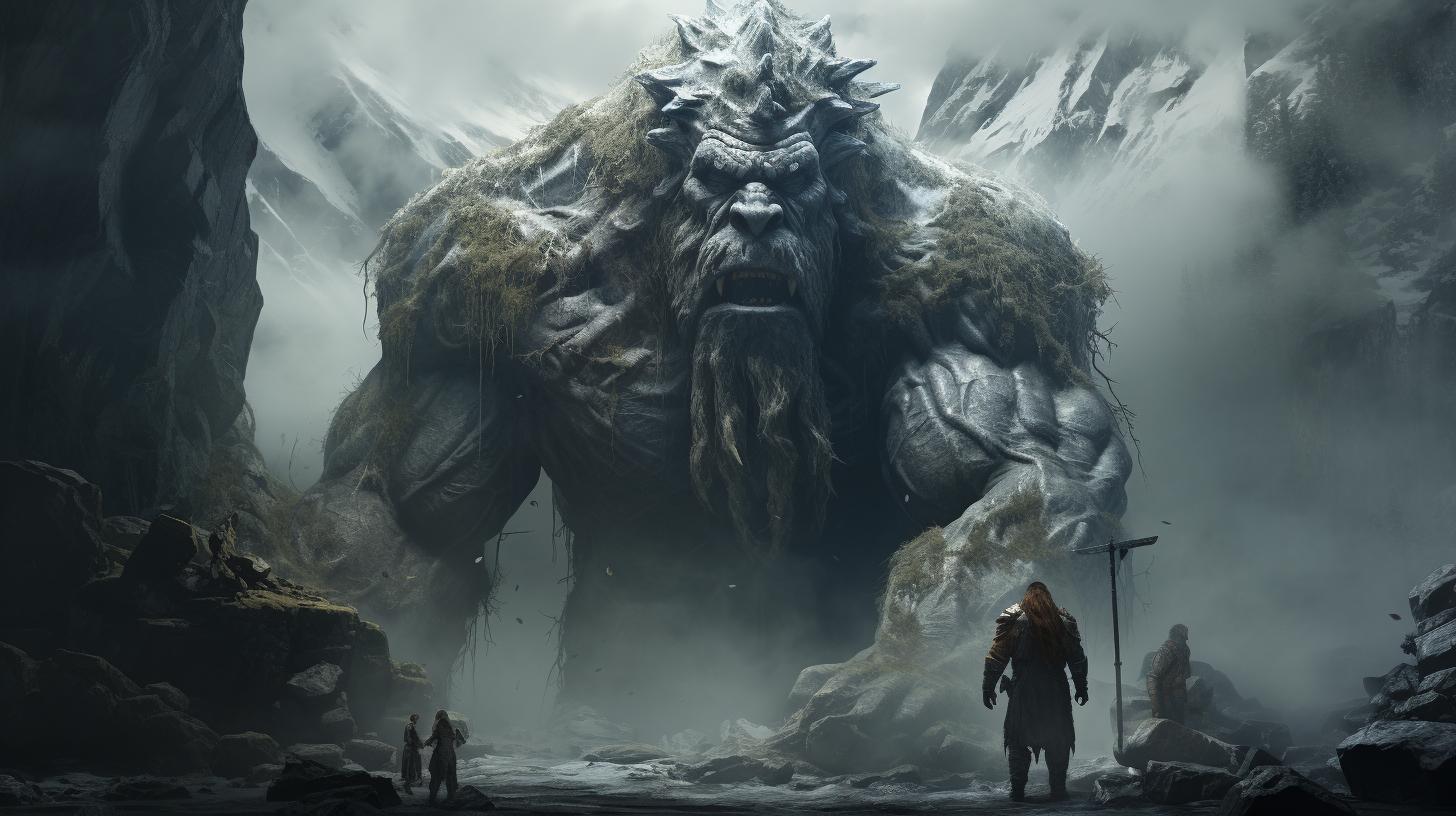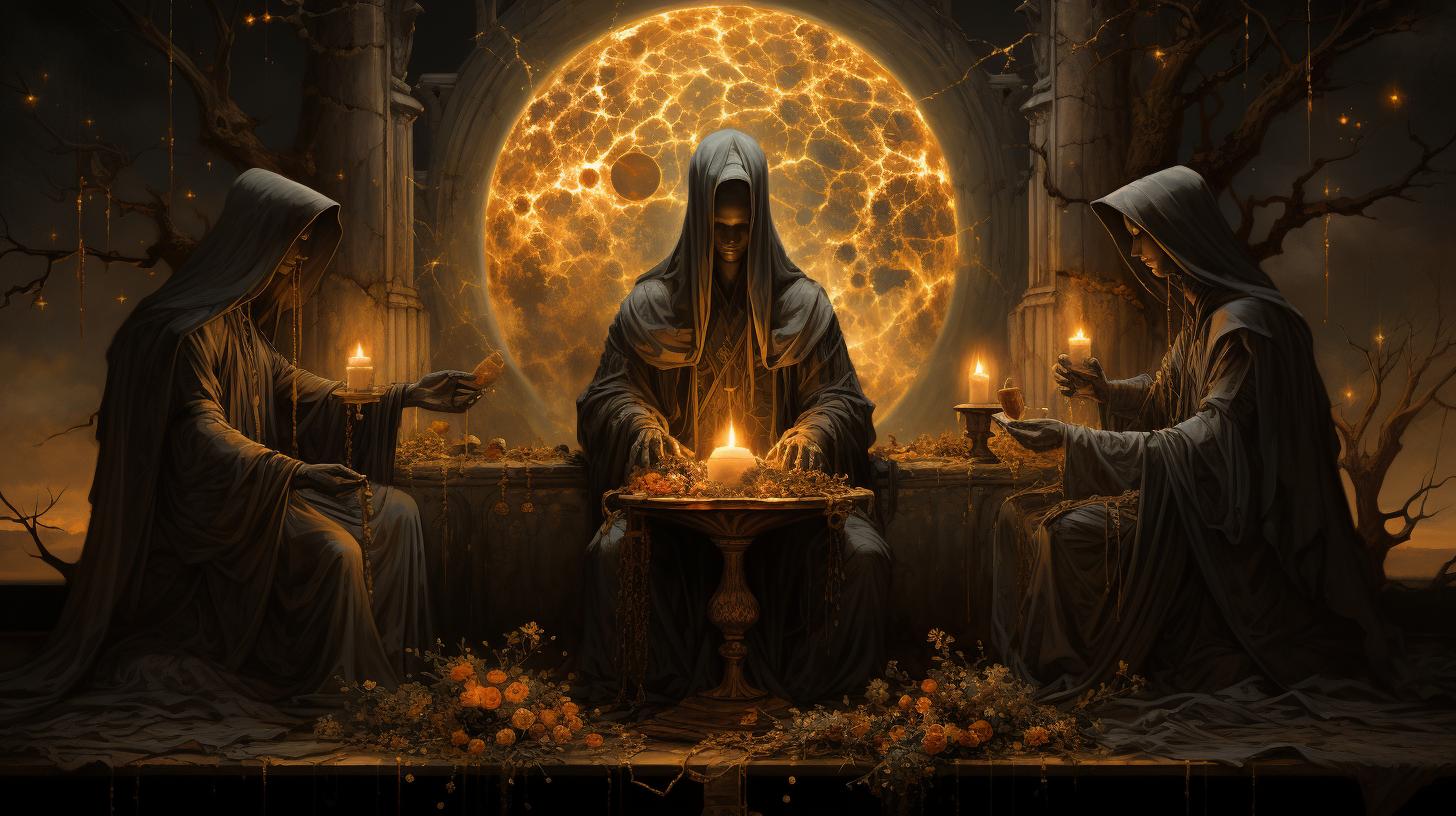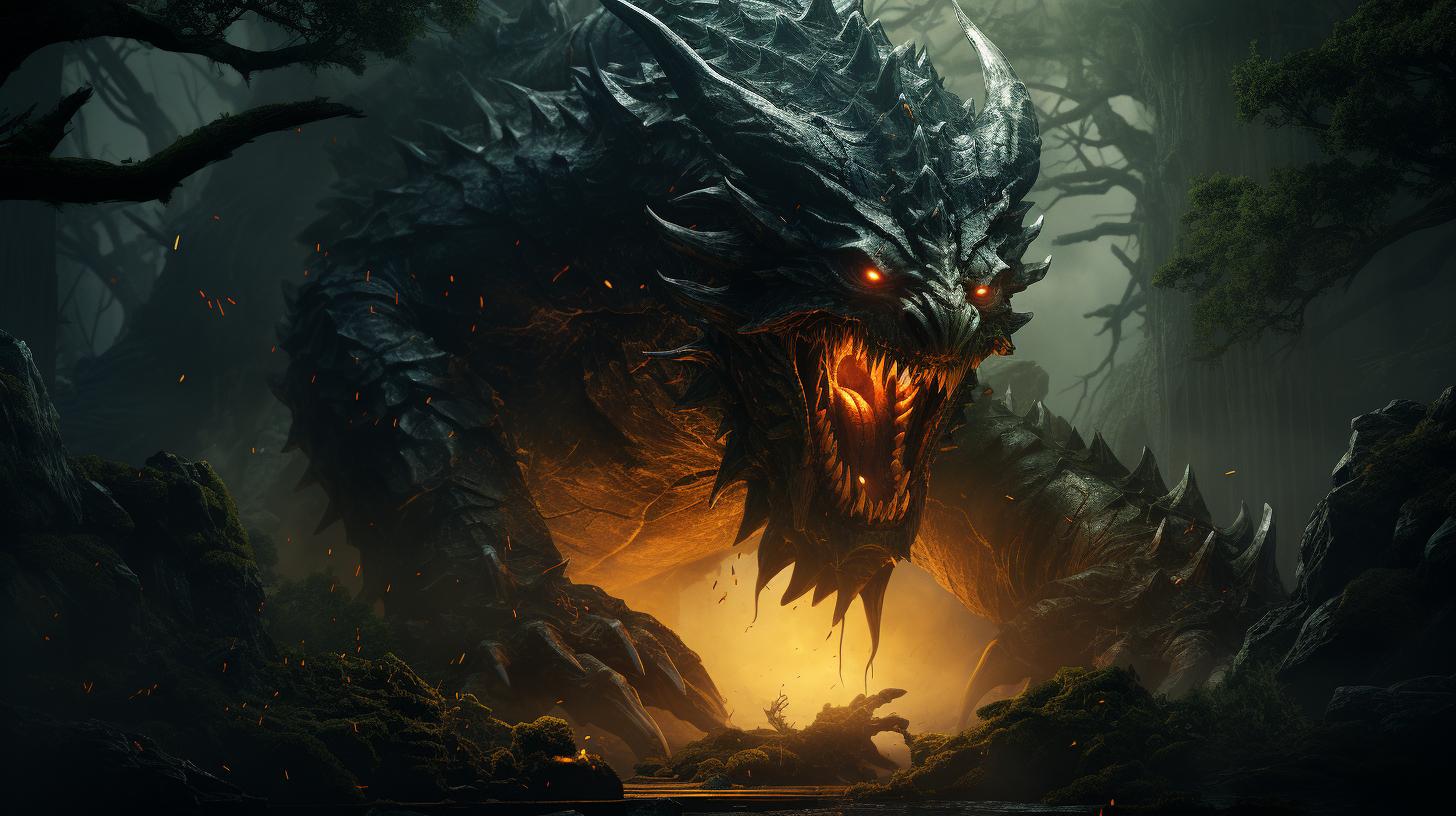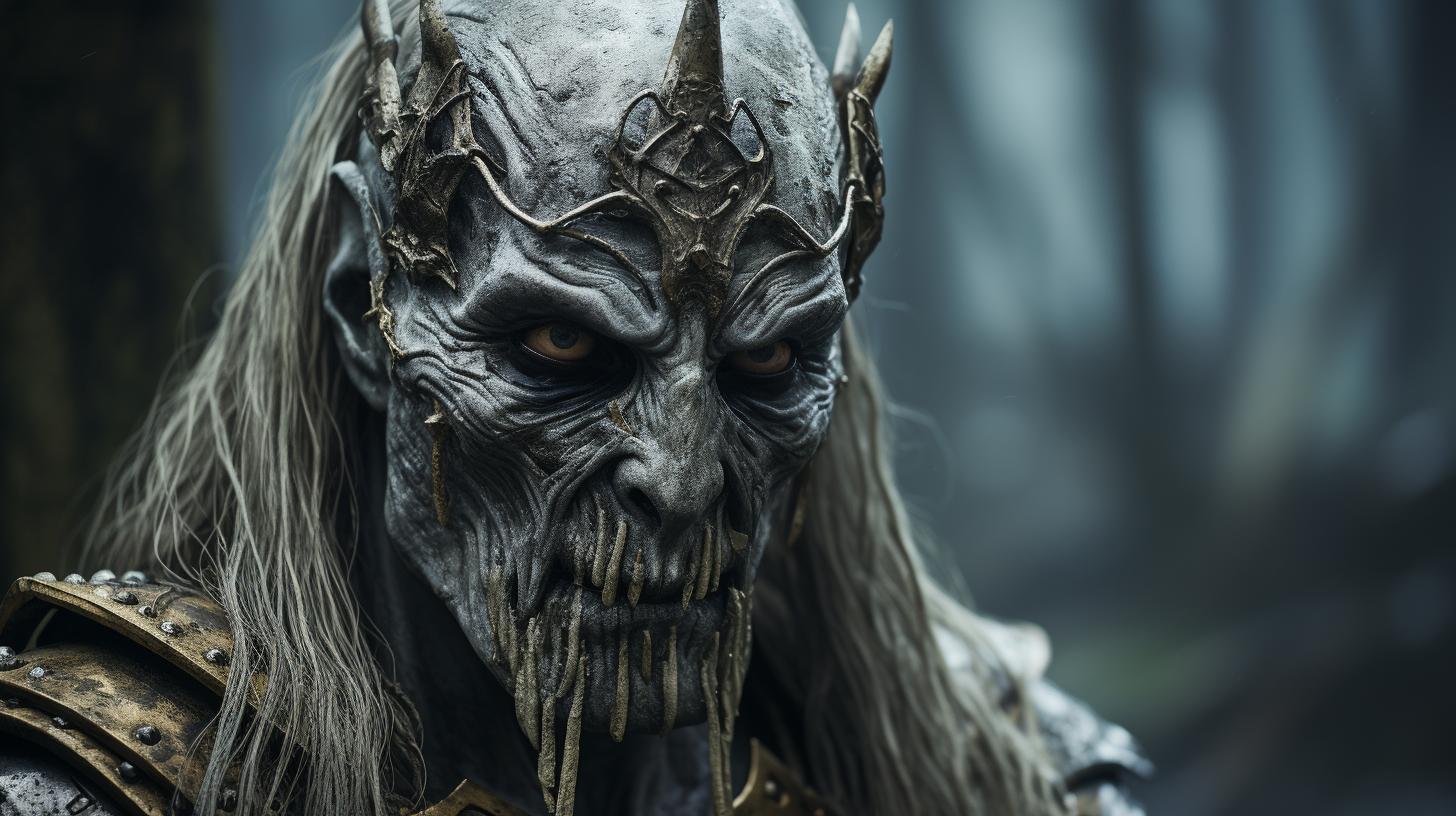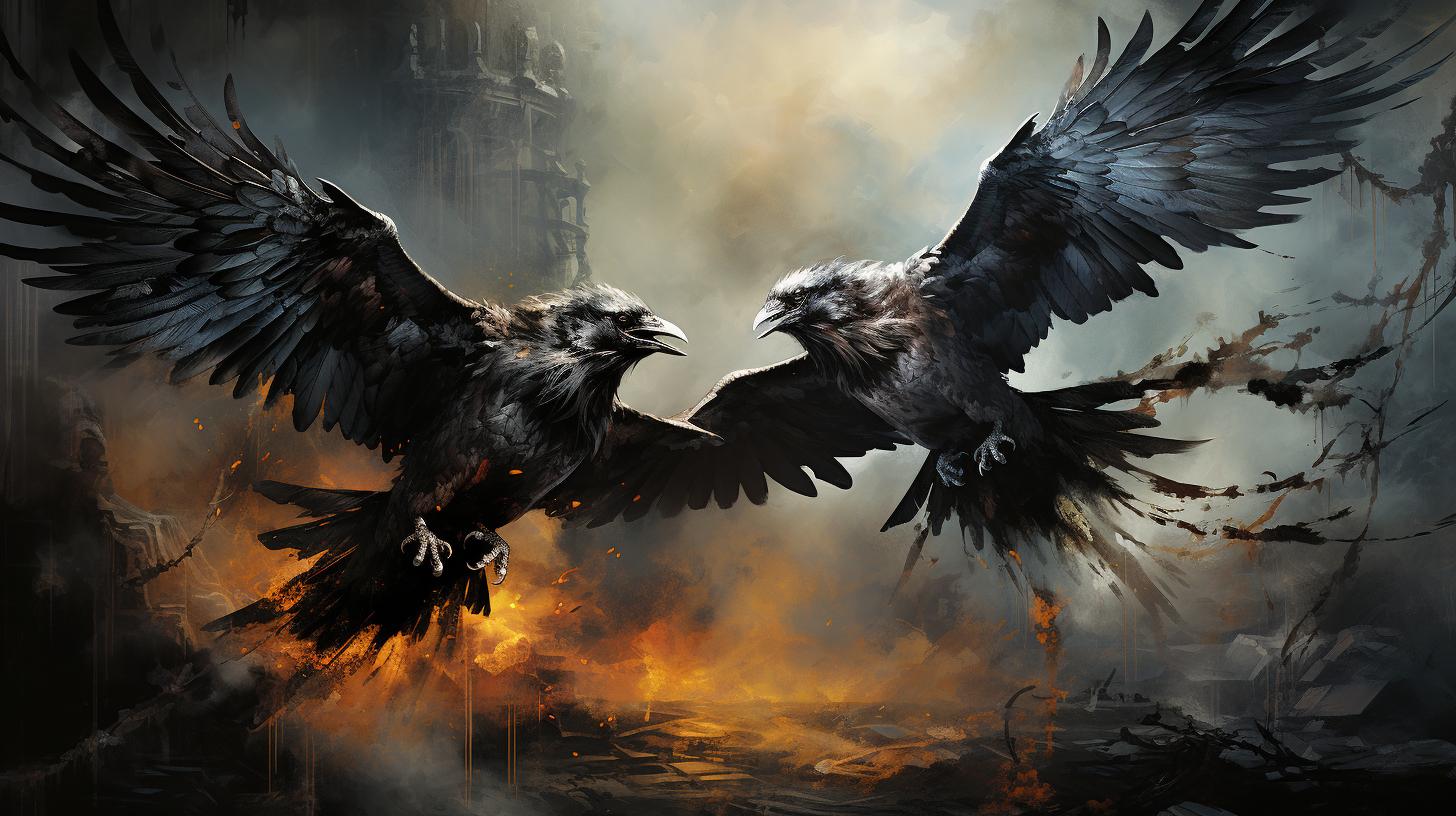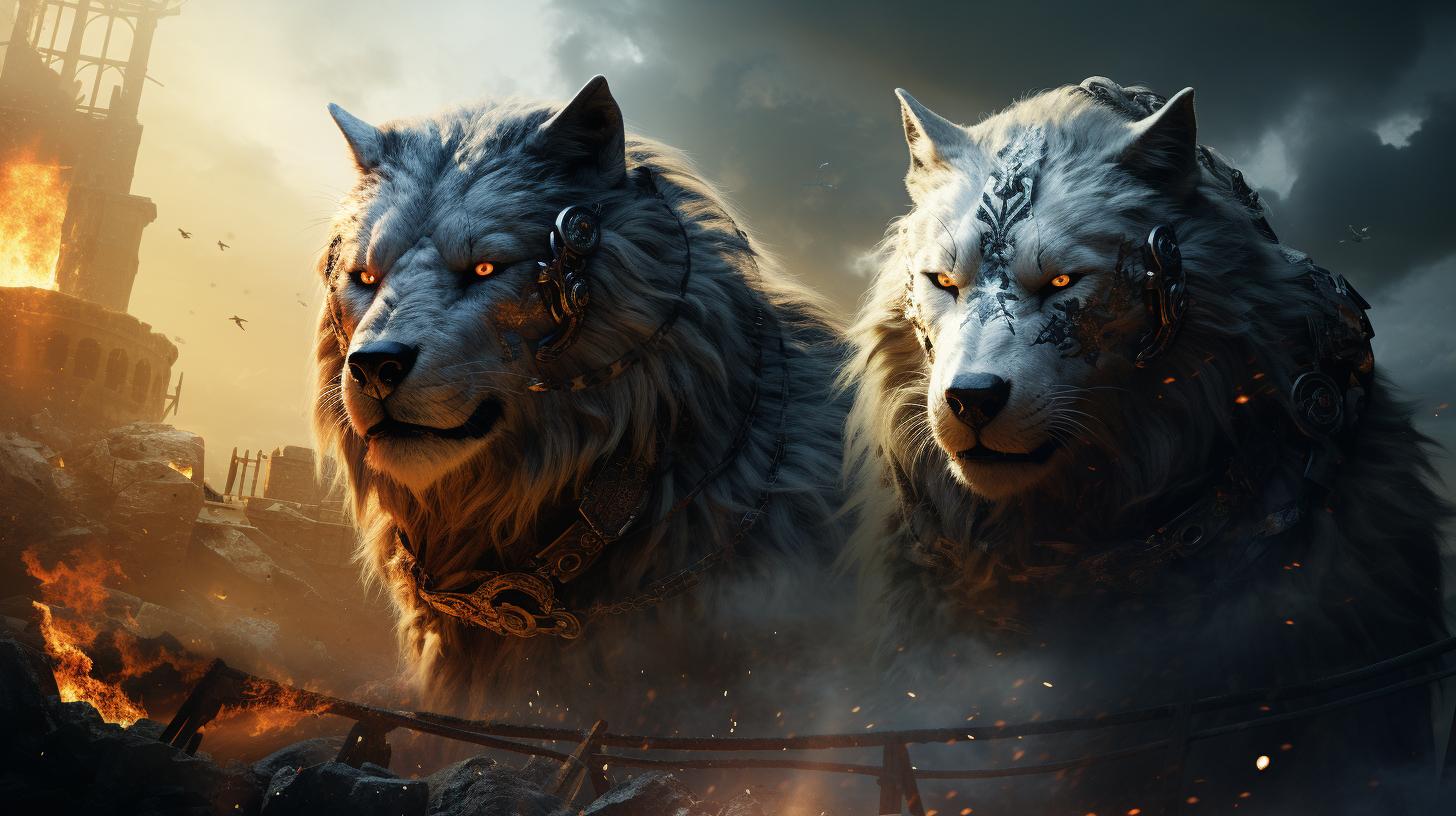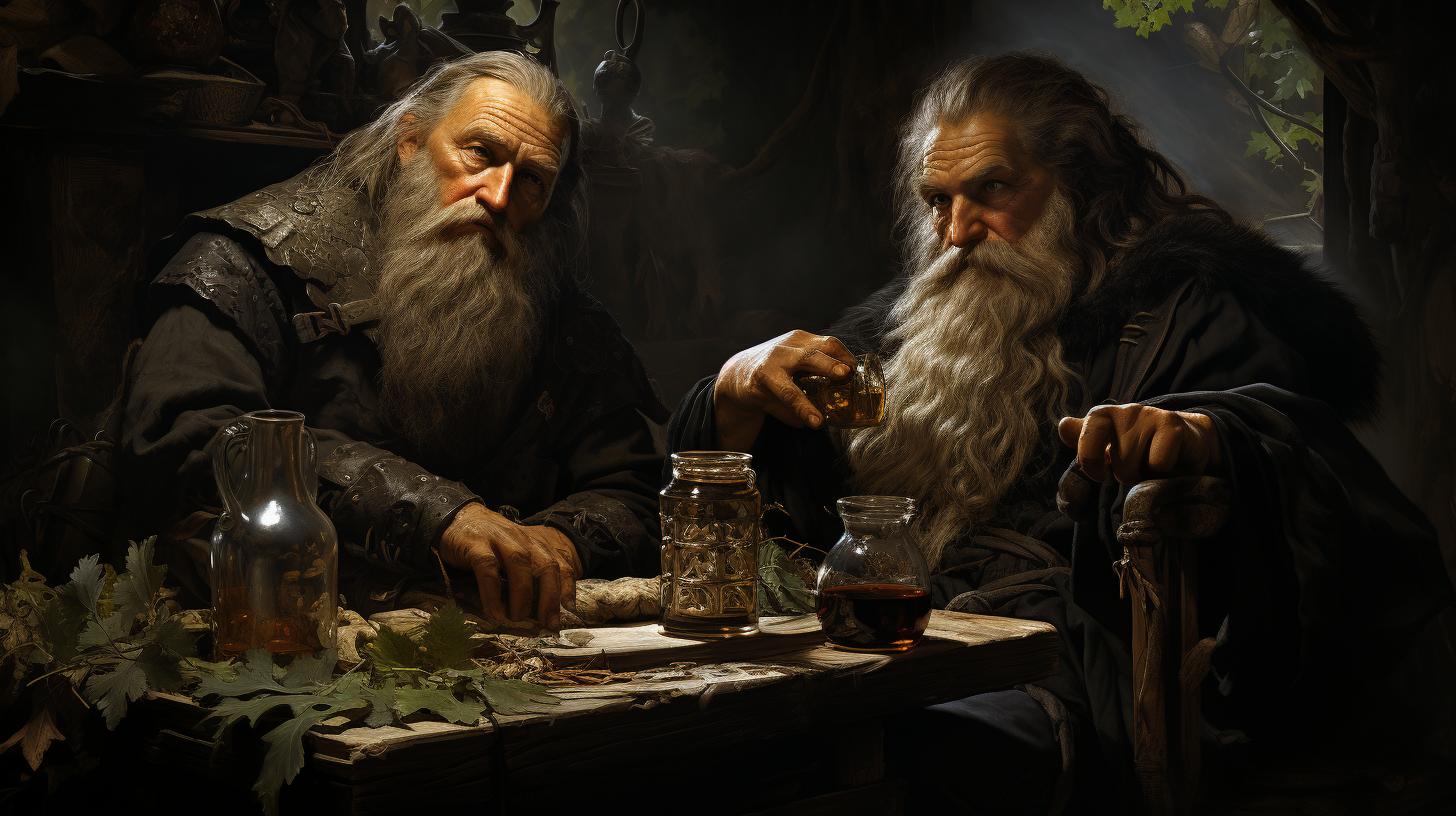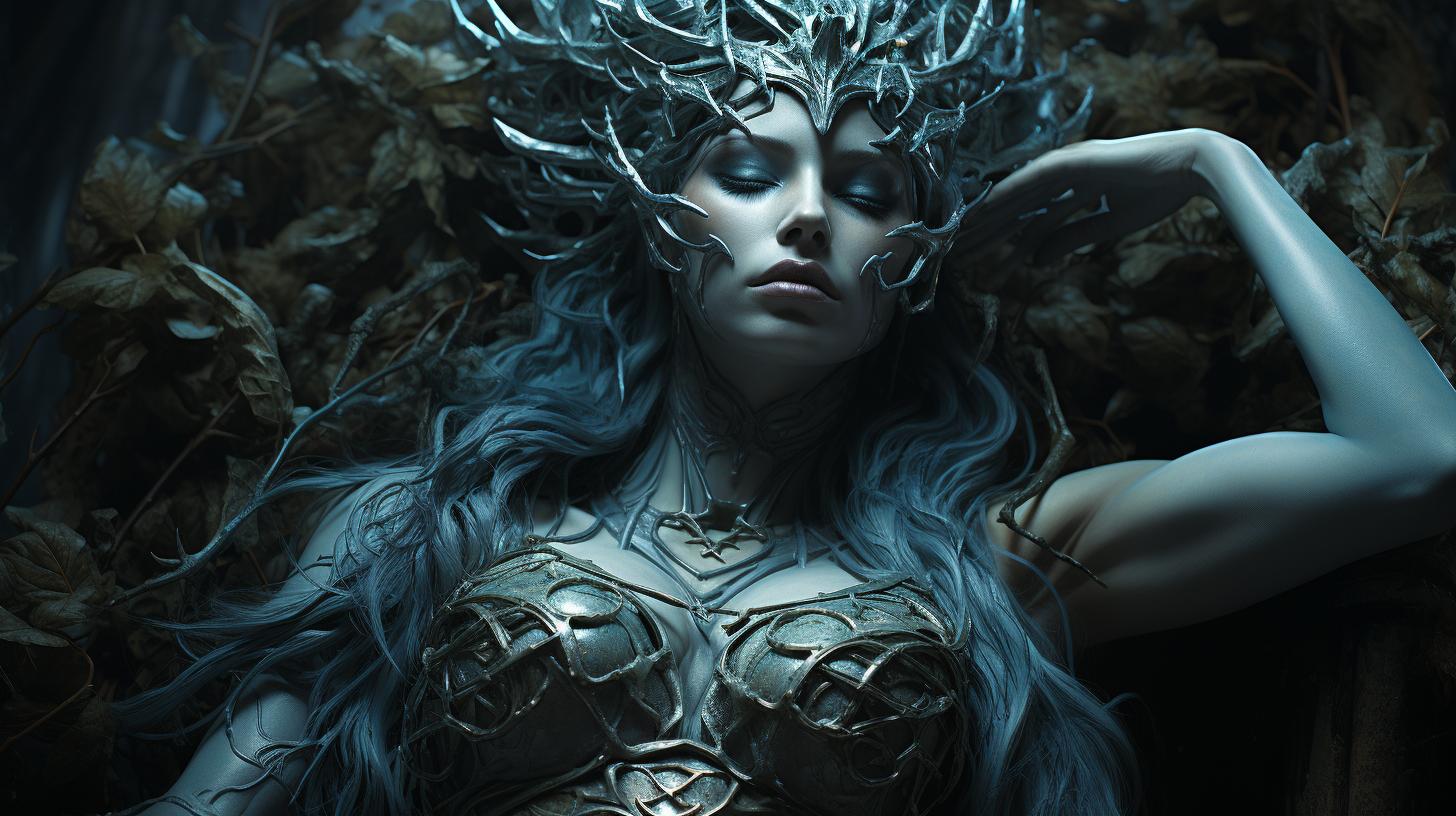Who is Ymir in Norse Mythology: Exploring the Primordial Giant’s Role
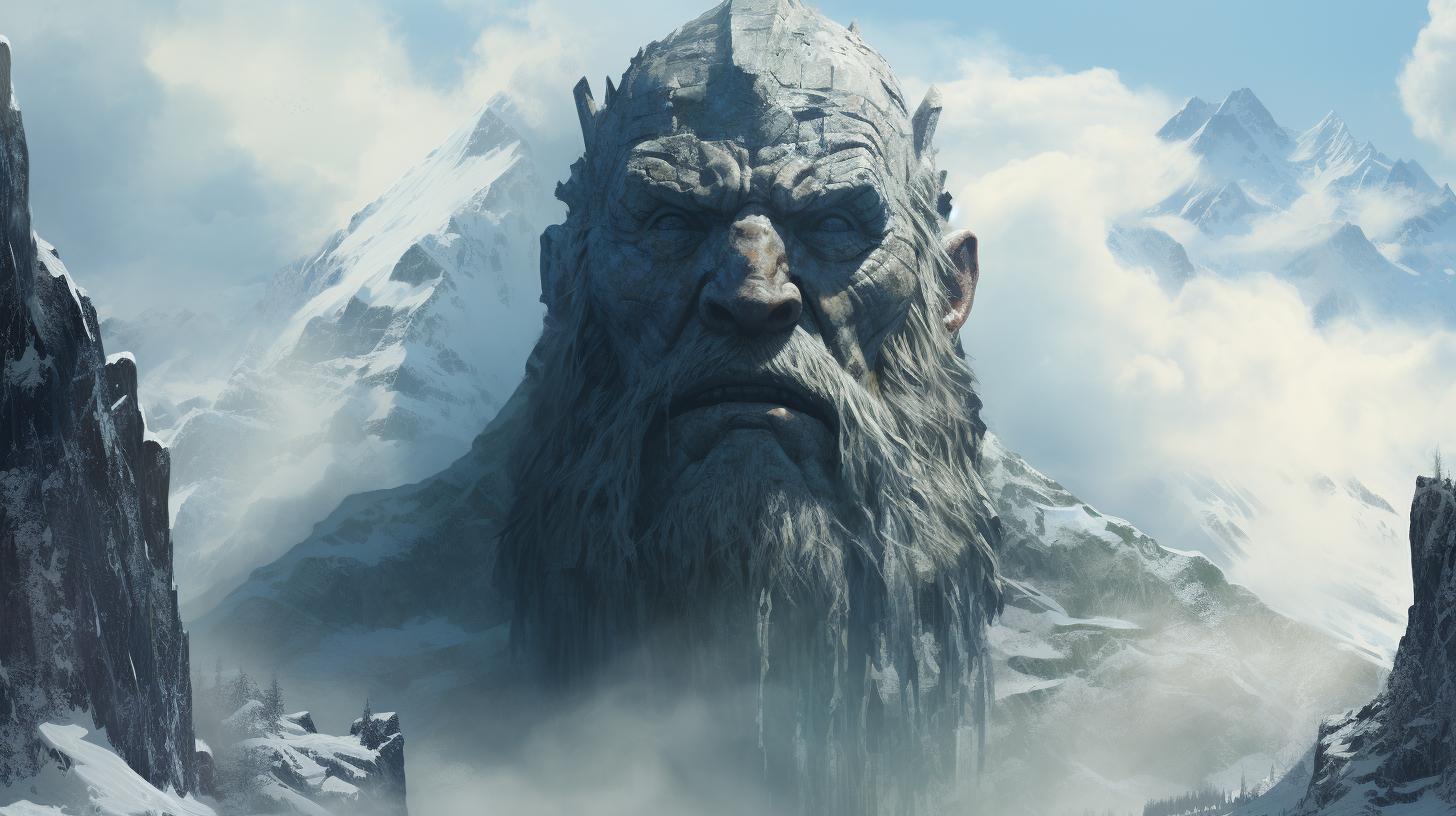
Ymir in Norse Mythology is a fascinating figure, described as a primordial giant who played a pivotal role in the creation of the world. This article explores the origins of Ymir, his relationship with the gods, the mythical components of his body, and the parallels between Ymir and primordial beings in other cultures.
It also delves into related topics such as Yggdrasil, the pronunciation of Yggdrasil, the role of Buri in Norse mythology, and the mysterious sacrifice of Odin. Join us on this journey through the captivating realm of Norse mythology.
Ymir in Norse Mythology: Exploring the Primordial Giant’s Role
Ymir, a fascinating character in Norse mythology, holds a significant role in the creation of the world. Let’s delve into the enigmatic origins of Ymir and the mesmerizing tale of how the world came to be.
The Origins of Ymir and the Creation of the World
According to Norse mythology, the world began with a void filled with magical potential. Out of this void emerged two opposing realms, Niflheim and Muspell. The collision of Niflheim’s icy elements and Muspell’s fiery essence gave birth to Ymir, a primordial giant also known as Aurgelmir, Brimir, or Bláinn.
Ymir was born from the venomous substance, Eitr, which dripped from the icy rivers of Élivágar in the grassless void of Ginnungagap.
The Connection Between Ymir and the Gods
Ymir’s significance extends beyond his role as a primordial giant. He is considered the ancestor of both giants and gods. The primordial cow, Audhumla, also emerged from the molten ice of Niflheim and played a vital role in nourishing Ymir.
Through Audhumla, a man named Búri was formed, who eventually became the grandfather of the gods Odin, Vili, and Vé. This intricate connection between Ymir and the gods solidifies his position as a crucial figure in Norse mythology.
The Mythical Components of Ymir’s Body and Their Significance
In Norse myth, Ymir’s physical body played a crucial role in the creation of the world. The gods used various parts of his body to shape different elements of the Earth.
His flesh transformed into the earth itself, his blood became the vast seas and lakes, his bones turned into rocks and stones, while his teeth and molars became mountains and scree.
Ymir’s blood circled the earth, forming the sea, and his skull became the sky. Additionally, the gods hurled sparks from Muspell into the sky, creating the mesmerizing stars above.
Parallels in Mythologies: Ymir and Primordial Beings in Other Cultures
The story of Ymir reveals intriguing parallels with primordial beings found in other mythologies.
Notable similarities can be found in Zorvanism, Rigveda, Polynesian, Japanese, Afghan, and Kashmiri mythologies. These similarities highlight the recurring theme of a primordial entity giving birth to the world, emphasizing the archetypal significance of Ymir’s role in Norse mythology.
Yggdrasil Pronunciation: Unraveling the Mysteries of the World Tree
The significance of Yggdrasil, the World Tree in Norse mythology, is profound. It serves as the cosmic axis, connecting realms and beings within the Norse cosmos. Understanding the importance of Yggdrasil provides valuable insights into the intricate tapestry of Norse mythos and its underlying symbolism.
Understanding the Importance of Yggdrasil in Norse Mythology
Yggdrasil holds a pivotal role in Norse cosmology, towering over the realms of the gods, giants, and humans. It acts as a bridge between these realms, representing the interconnectedness of all things – the spiritual and the tangible, the divine and the mortal.
This colossal ash tree symbolizes stability, growth, and the cyclical nature of existence.
Pronunciation of Yggdrasil: Variations and Common Misinterpretations
Pronouncing “Yggdrasil” correctly can be perplexing for those unfamiliar with Old Norse. The pronunciation varies depending on speech patterns and dialects, but a general guide is “IGG-drah-sill” or “IGG-druh-suhl.” Common misinterpretations include “Yig-druh-sill” or “Yugg-druh-sill.”
While the precise pronunciation may differ among individuals, grasping the essence of the name is crucial.
Symbolism and Significance of Yggdrasil in Norse Cosmology
Yggdrasil represents more than just a physical tree. Its branches stretch across the sky, touching distant realms, and its roots reach deep into the underworld. The three main levels of the tree symbolize different realms, with the upper branches signifying Asgard (home of the gods), the trunk representing Midgard (the realm of humans), and the roots denoting Niflheim and Hel (the realms of the dead and giants).
The symbolism of Yggdrasil goes beyond its physical form. It embodies the cyclical nature of life, death, and rebirth. The tree’s leaves and fruits represent abundance and the interconnectedness of all living beings.
It serves as a reminder of the fragile balance between the realms and the cosmic order essential for existence.
Exploring the symbolism and significance of Yggdrasil in Norse cosmology sheds light on the profound wisdom embedded in Norse mythology and deepens our understanding of the intricate web of connections within the Norse cosmos.
Buri in Norse Mythology: The Ancestral Figure and Grandfather of Gods
In the complex tapestry of Norse mythology, Buri holds a pivotal role as an ancestral figure and the grandfather of the mighty gods Odin, Vili, and Vé. Let us delve into the depths of Buri’s significance and explore the various aspects of his mythological presence.
Uncovering the Role of Buri in Norse Creation Mythology
Buri emerges from the primordial void, playing a crucial part in the creation of the world. Born from the mingling energies of Niflheim and Muspell, Buri embodies the essence of the beginning.
His very existence sets the stage for the subsequent unfolding of the Norse cosmos.
In the realm of Ginnungagap, Buri stands as a symbol of primordial potential, representing the dormant forces that would shape the realms to come.
His emergence sets in motion the interconnected web of gods, giants, and the wider Norse pantheon.
Buri’s Descendants: Odin, Vili, and Vé
A notable lineage flows from Buri, with his grandsons taking center stage in the Norse pantheon. Odin, the Allfather and supreme deity, embodies wisdom, war, and magic. Vili and Vé, also known as the Æsir gods, contribute to the balance and order of the cosmos.
The exploits and wisdom of these deities shape the Norse cosmos, their actions shaping the destiny of gods and mortals alike. Buri’s role as the progenitor of these prominent figures establishes his enduring legacy within the intricate tapestry of Norse mythology.
Exploring the Mythological Connection Between Buri and Ymir
The web of Norse mythology weaves intricate connections, and Buri’s link to Ymir is no exception. Ymir, the primordial giant, shares a lineage with Buri, solidifying the ties between these two crucial figures.
As Ymir gave life to the giants and gods through his flesh, blood, and bones, the connection to Buri offers insight into the origins of both the mightiest deities and the forebears of the jötnar.
This entwining of the divine and primal highlights the intricate nature of Norse cosmology.
The mythological connection between Buri and Ymir deepens our understanding of the complex dynamics at play in Norse mythology.
It reveals how the ancient Norse sought to explain and contextualize the origins of gods and giants, their interdependence, and the intricacies of the larger cosmos.
The Mysterious Sacrifice: Why Did Odin Hang Himself?
Odin, the prominent god in Norse mythology, is depicted in various tales that shed light on his enigmatic act of self-sacrifice.
This section delves into the purpose and meaning behind Odin’s daring act, exploring the underlying symbolism and hidden wisdom that can be unearthed from his hanging.
The Tale of Odin’s Self-Sacrifice: Its Purpose and Meaning
Odin’s self-sacrifice is a pivotal event in Norse mythology, serving a greater purpose beyond what meets the eye.
This account unravels the circumstances surrounding Odin’s decision to hang himself from Yggdrasil, the World Tree, and the profound implications it holds for the gods and the world itself. It delves into the depths of the symbolism embedded within this remarkable tale.
Delving into the Symbolism and Hidden Wisdom behind Odin’s Hanging
Odin’s hanging carries deep symbolic significance, reflecting his relentless pursuit of wisdom and knowledge. By sacrificing himself, Odin taps into a primordial well of wisdom, gaining profound insights into the mysteries of the universe.
This section unpacks the multifaceted symbolism associated with Odin’s act and explores the profound wisdom that can be derived from it.
Odin’s Quest for Knowledge and the Acquisition of the Runes
Central to Odin’s self-sacrifice is his quest for knowledge and his symbolic journey towards the acquisition of the runes.
As Odin hangs on the World Tree, he undergoes a transformative experience, delving into the mysteries of the runes and emerging empowered with their profound wisdom. This section delves into the depths of Odin’s quest, shedding light on the significance of the runes and their role in Norse mythology.
.

